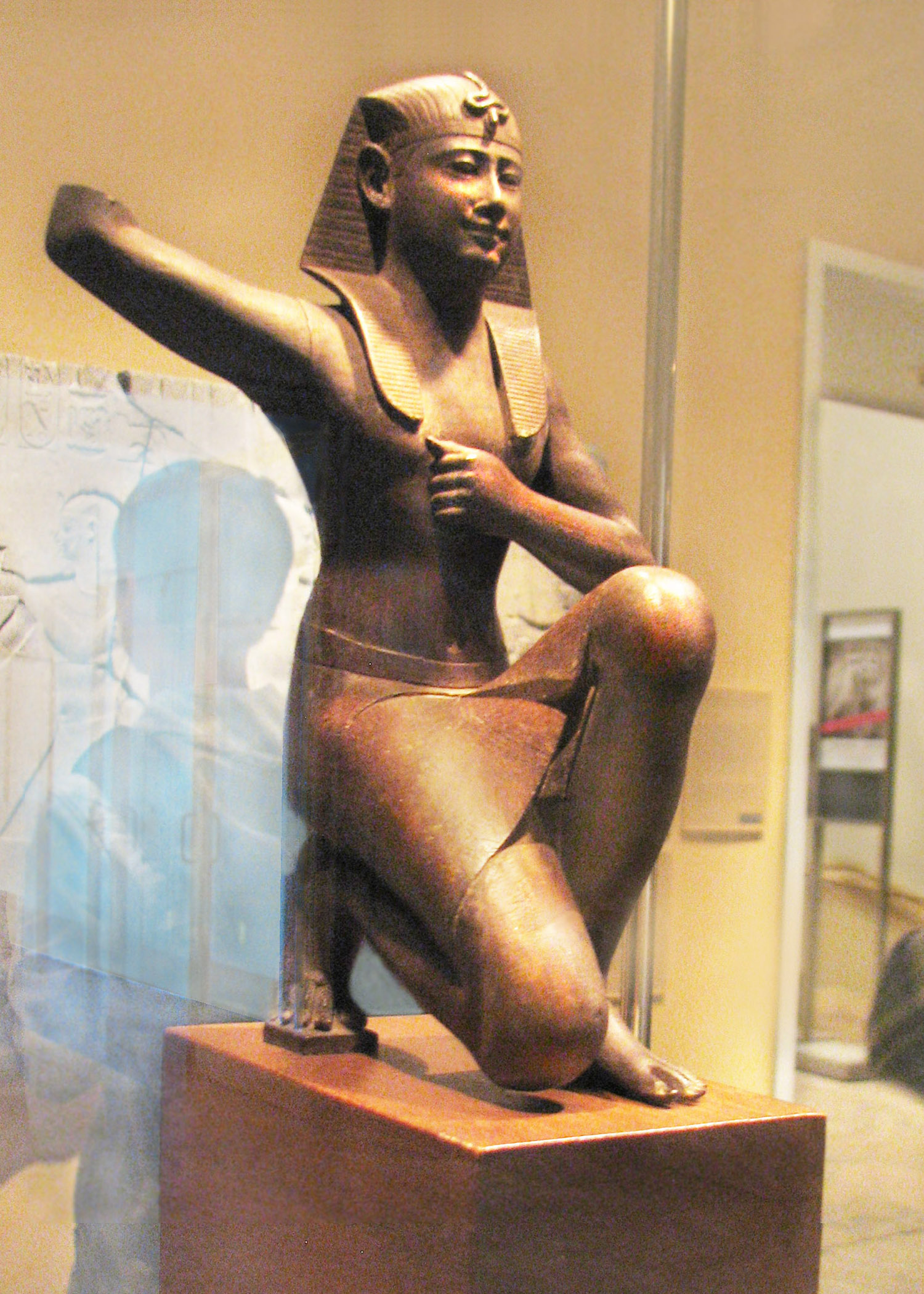
Wooden Ritual Royal Figure
Dynasty 30 (380-343 BCE) - perhaps early 3rd century BCE
Purchase, Anne and John V. Hansen Egyptian Purchase Fund and Magda Saleh and Jack Josephson Gift, 2003 (2003.154)

Wooden Ritual Royal Figure
Dynasty 30 (380-343 BCE) - perhaps early 3rd century BCE
Purchase, Anne and John V. Hansen Egyptian Purchase Fund and Magda Saleh and Jack Josephson Gift, 2003 (2003.154)
|
From info card: "The fluid posture of this extraordinary wood-carving evokes a stately performance. Egyptian relief representations depict figures like this as part of troupe of mythical spirits with humans bodies and falcom or jackal heads who strike their chests to sound a rhythmic acclamation called henu in ancient Egyptian."
 The jubilation pose is called 'henu' (This illustration Wilkinson, _Reading Egyptian Art_)
"Rather than the traditional rearing uraeus cobra, the figure carries a triangular-headed serpent over its forehead. This emblem is found on a restricted number of royal images from the time span of this figure, but its meaning remains obscure."
|